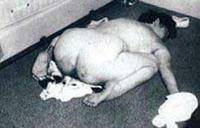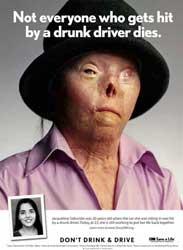PBS220Y: History of Social Reform
- In 100-level: put initial social reform stuff in PBA120Y
- Here: extended info on history of social reform in relation to AVP. Update the info? http://globalnews.ca/news/2204006/these-images-changed-public-opinion-has-alan-kurdis-photo-done-the-same/ e.g.update to more recent social issues? (but keep pro-abortion movement)
- Then more advanced info in PBS306H? Social reform stuff that is not just about imagery?
“When we are confronted by a powerful image, we all have a choice: We can look away, or we can address the image.” Jonathon Klein
The Pro-Abortion Movement
It is worth noting that the pro-abortion movement also achieved social reform, in part, through the use of graphic depictions of what they were fighting against. One doesn’t have to agree with their conclusion in order to agree that their methodology worked. Canadian abortionist Garson Romalis conveys the power of graphics in his 2008 National Post article, “Why I am an abortion doctor.” He wrote, “Abortion was illegal when I trained, so I did not learn how to do abortions in my residency, although I had more than my share of experience looking after illegal abortion complications.”1) Indeed, he did. He began his obstetrics and gynecology residency in 1962 and “will never forget the 17-year-old girl lying on a stretcher with 6 feet of small bowel protruding from her vagina.”2)
The graphic image Romalis saw in-person was something abortion advocates knew would help sway public opinion, and policy, in their favour. In 1964, an American woman, Gerri Twerdy Santoro, was found dead as a result of a self-induced illegal abortion. She was only 28 years old and had two other children. Fearing her abusive estranged husband would kill her if he discovered she was pregnant by another man, she and her boyfriend aborted their pre-born child. In the process, she herself died and was found lying face down in a pool of blood. The photograph of this horrific site first appeared in MS Magazine in April 1973.3) It has since been used by the pro-abortion movement as a tool to make their case for why abortion should remain legal. 

The Abortion Caravan
In 1970, hundreds of women gathered in Vancouver to protest limited access to abortion. They then climbed into vehicles and began to drive across the country in what history has come to call “The Abortion Caravan.” Many Canadian historians credit this Caravan with laying the groundwork to the 1988 Supreme Court decision to strike down all abortion laws.
A core team of pro-abortion protestors drove from Vancouver to Ottawa. When they arrived they left a coffin—representing women who died from illegal abortions—at the Prime Minister's house. They piled objects in it that women used to perform illegal abortions, such as knitting needles, a Lysol container, and a vacuum cleaner hose4). Their protest forced Parliament to shut down for over half an hour. The nation was forced to consider an issue they had previously ignored.
These abortion advocates used vivid imagery—coffins and coat hangers—to draw attention away from the pre-born and force politicians and the public to focus on the women in front of them.
The women of the abortion caravan had two goals:
- Repeal of the abortion laws, and
- Free abortion on demand.
18 years later, they got what they wanted when the Supreme Court of Canada threw out all protection for Canadian pre-born children in the 1988 Court decision R. v. Morgentaler.
Refugee Crisis
Syrian Refugee Crisis
The war in Syria, and its resulting refugee crisis, has been going on since March 2011. By 2015, around 220,000 people had been killed and around 6.6 million people had been displaced.
- countries knew it was happening but no one doing anything; majority of the public didn’t know/care
- wasn't until Sept. 2015 when a Syrian boy by the name of Alan Kurdi, 3 yrs old, washed ashore on the Mediterranean sea, when consciousness awakened to the fact that something had to be done
“There was nothing left to do for him. There was nothing left to bring him back to life. I thought, This is the only way I can express the scream of his silent body.” - Nilüfer Demir, photographer
- The pressure on governments to address the refugee crisis skyrocketed. The refugee crisis became a central issue in the Canadian election, since Kurdi's family were denied refugee status there5). The public backlash spurred other world leaders, such as Barack Obama and Angela Merkel, to pledge to bring more Syrian refugees to their countries6). Though people may disagree on the best way to address the crisis, that one image spurred millions of people to demand action.
“[The] image whipped around social media within hours, accumulating potency with every share. News organizations were compelled to publish it—or publicly defend their decision not to. And European governments were suddenly compelled to open closed frontiers. Within a week, trainloads of Syrians were arriving in Germany to cheers, as a war lamented but not felt suddenly brimmed with emotions unlocked by a picture of one small, still form.” - Time magazine7)
Alan Kurdi's aunt Tima Kurdi: “It was something about that picture, God put the light on that picture to wake up the world.” 

Canadian Seal Hunt
Victims of War
Vietnamese “Napalm girl” = very famous, tragic photo.
Led to dramatic examples of civil disobedience –> the Catonsville nine https://en.wikipedia.org/wiki/Catonsville_Nine
Their statement, after burning draft files with napalm:
“Our apologies, good friends, for the fracture of good order, the burning of paper instead of children, the angering of the orderlies in the front parlor of the charnel house. We could not, so help us God, do otherwise.
For we are sick at heart, our hearts give us no rest for thinking of the Land of Burning Children.”
http://www.historyisaweapon.com/defcon1/berrigancatonsvillenine.html
Drug Education
Drinking & Driving
 The Texas Department of Transportation uses the story and image of a woman named Jacqueline Saburido to convey the dangers of drinking and driving. In 1999, a drunk driver collided with the vehicle she was in. A fire broke out when Jacqueline was pinned in the front seat of the car. She was inflicted with burns on over 60% of her body. She lost her hair, ears, nose, left eyelid, much of her vision, and her fingers had to be amputated.8) Her story is a disturbing one, but it conveys an important lesson: some people’s “choices” have a devastating effect on other people’s lives.
The Texas Department of Transportation uses the story and image of a woman named Jacqueline Saburido to convey the dangers of drinking and driving. In 1999, a drunk driver collided with the vehicle she was in. A fire broke out when Jacqueline was pinned in the front seat of the car. She was inflicted with burns on over 60% of her body. She lost her hair, ears, nose, left eyelid, much of her vision, and her fingers had to be amputated.8) Her story is a disturbing one, but it conveys an important lesson: some people’s “choices” have a devastating effect on other people’s lives.
Animal Rights/Animal Welfare Movements

- Documentary had video evidence, testimonies etc. of mistreatment of whales at SeaWorld, and documentary argued that this mistreatment led to the whales acting aggressively and harming humans. Showed footage of whale attacking people
- See impact of documentary:
- Scandal, major loss of revenue for SeaWorld, companies and celebrities cutting ties with SW, laws proposed in states to curtail captivity of whales
- “In November 2015, SeaWorld announced plans to end killer-whale shows at its theme park in San Diego. In March 2016, SeaWorld announced it would end its orca breeding program and begin to phase out all live performances using orcas. In a statement regarding the decision, the company said, 'Society is changing and we’re changing with it.'”
